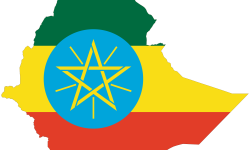Hawassa University (HU) was established at Hawassa on the 25th of April 2000, by merging three colleges in Southern Ethiopia፡ Awassa College of Agriculture (ACA), Wondogent College of Forestry (WGCF), and Dilla College of Teachers Education and Health Sciences (DCTEHS). Prior to the formation of the University, these three colleges were working separately and had their own historical backgrounds.
Awassa College of Agriculture (ACA) was first established in July 1976 to ofter a 2-year diploma course with specialization in Plant Science, Animal Science, Agricultural Engineering and Home Economics. The main objective of the college was training middle level technicians that would serve as agriculture development and home agents all over the country.
In the 1990-91 academic years the college launched a four-year degree program in Plant Production and Dry-Land Farming, Animal Production and Range Land Management and a five-year Program in Agricultural Engineering and Mechanization. Moreover, the teaching staff of the college has actively been engaged in conducting research and offering consultancy services to various governmental and non-governmental organizations. The college has strong bilateral relations with several foreign Universities and organizations such as the Norwegian University of Life Sciences, Swedish University of Agricultural Sciences, The University of Saskatchewan Canada, Universities of Oklahoma, Colorado and Langston in US, and with donor organizations such as NORAD, CIDA, NUFU, SIDA, NIH-USA, Irish Aid, EU, USAID and the World Bank, which are instrumental in upgrading the competence of the college in human and physical resources.
Wondo Genet College of Forestry (WGCF) was established as Forestry Resources Institute in January 1978 to train forest technicians in a two year diploma program. In 1996/97 academic year, the college was upgraded to a four-year degree program following the transfer of the Forestry Faculty from Alemaya University of Agriculture to WGCF. The graduates of the College represent a major fraction of the trained manpower that handles the managerial and technical tasks of forestry development and environmental protection.
Initially, WGCF started with very limited resource and institutional capacity- infrastructure, and teaching facilities and local staff. Through sustained effort and support provided by the Swedish International Development Cooperation Agency (SIDA), the college has been successful in establishing training programs as well as building essential infrastructure, teaching facilities, staff and overall institutional capacity.
Dilla College of Teachers’ Education and Health Sciences was established in 1996 with two faculties: Faculty of Teacher Education and Faculty of Health Science. The objective of the college was to train secondary school teachers and mid-level health professionals. The college is upgraded to the level of an autonomous University in 2006.
Due to its geographical location and other advantages, Hawassa was chosen as the administrative center of the University. Following the establishment of the University, the Faculties of Social Sciences, Natural Sciences and Technology came into existence at Hawassa-Main Campus.
Hawassa University is a comprehensive University with more than 21,000 students and 2,500 employees. It offers undergraduate and graduate courses ranging from Medicine and Health Sciences, the Natural and Physical Sciences, Technology, Agriculture, Forestry and Natural Resource Management, to Law, Business, the Humanities and the Arts. The University has four campuses, four institutes 25 departments a teaching hospital and a teaching hotel.
The university is undertaking a range of research projects in collaboration with national and international research and education organizations. The research projects are in the areas of agriculture, forestry, food sciences, health, education, environment and social sciences. International research collaborators include Norwegian University of Life Sciences, University of Cork, Swedish Agricultural University, University of Colorado, Langston University, Oklahoma State University, Oregon State University and University of Saskatchewan. International funding partners include NORAD, SIDA, CIDA, NUFU, ICRAF, USAID, EU and Irish AID. The Ethiopian Institute of Agricultural Research and Ethiopian Science and Technology Agency are also among the major sources of fund for Hu research projects.
Currently, HU is actively engaged in expansion activities to increase its intake capacity. As part of this, the university has got 61 hectares of land from Administration of Yirgalem Town.
Finally, HU continues to be a center of excellence in teaching, research, extension and consultancy services contributing to sustainable development and improved livelihood of the society.














Leave a Comment